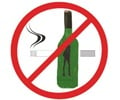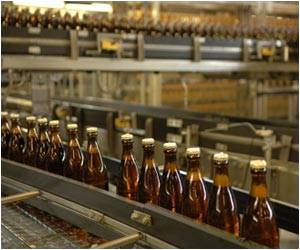Drinking more than guidelines recommend, should be seen as an indicator of alcohol dependence says a new study.
A new study suggests that hazardous drinking i.e. drinking more than guidelines recommend, should be seen as an indicator of alcohol dependence.
Present diagnostic guides divide alcohol-use disorders into two categories - alcohol abuse/harmful use and alcohol dependence.Now, some researchers and clinicians believe that ‘hazardous drinking’ should also be included in the guide as a new 'check stop' on the way to alcohol dependence, for the problem is becoming quite common.
"This is an issue that needs to be debated," said Mauri Aalto, chief physician at the National Public Health Institute and corresponding author for the study.
"Current tools – the Diagnostic and Statistical Manual of Mental Disorders - Fourth Edition, and the International Statistical Classification of Diseases - 10 – do not allow for a phenomenon like hazardous drinking, when a person drinks too much and is at risk but is not alcohol dependent," Aalto added.
For the study, Aalto and his colleagues examined data collected on 4,477 Finns (2,341 females, 2,136 males), 30 to 64 years of age, through the nation's Health 2000 Survey.
They analysed quantity and frequency of alcohol consumption, as well as socio-demographic characteristics.
Advertisement
"I think 5.8 percent is a high number, because we used rather high limits for hazardous drinking," Aalto said.
Advertisement
"A hazardous drinker may see many other people around him or her drinking as much as him or herself. This, together with not yet experiencing any alcohol-related harm, may lead the individual to wrongly think that there is no need to reduce drinking, Aalto said.
“However, hazardous drinkers do not include alcohol dependents, who usually drink a lot more. Alcohol-dependent drinkers already have significant alcohol-related harms and it is more difficult for them to change their drinking habits."
Researchers also found that hazardous drinking was more of a problem for males, those older than 40 years of age, those who were unemployed versus employed, and those who were cohabiting, divorced/separated or unmarried versus those who were married.
"I think it is interesting to notice that almost 80 percent of hazardous drinkers in our study were employed. Yet the probability of being divorced or unemployed, which might be inferred as 'adverse social consequences' of alcohol use, increases on the continuum from moderate drinking via hazardous drinking to alcohol dependence," Aalto said.
Aalto said that the study supports viewing hazardous drinking as a genuine public-health concern.
"The important point is that there is such a phenomenon like hazardous drinking and it is quite common," he added.
The study will be published in the September issue of Alcoholism: Clinical & Experimental Research and are currently available at OnlineEarly.
Source-ANI
SPH











